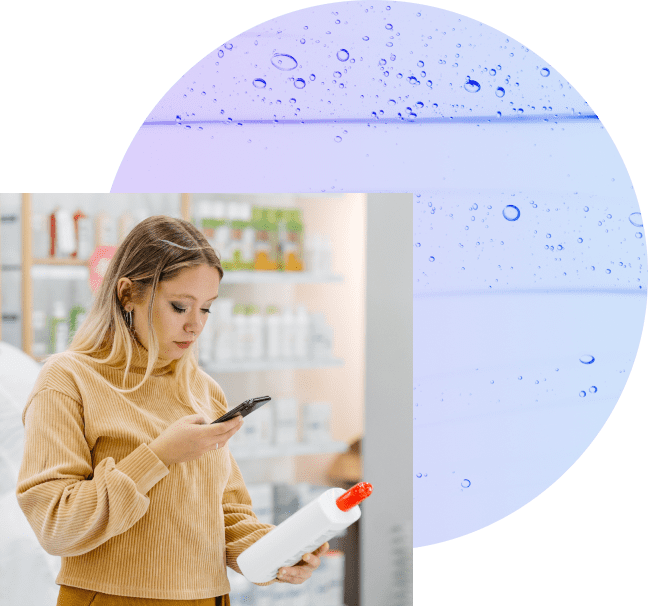Data: Robust
Styrene
Other Concerns
Enhanced skin absorption, Use restrictions (high), Endocrine disruption (moderate), Non-reproductive organ system toxicity (high), Ecotoxicology (low), Irritation (skin, eyes, or lungs) (high), and Occupational hazards (moderate)SYNONYMS
Unacceptable
Unacceptable: EWG VERIFIED products cannot contain this ingredient
Common concerns
See how this product scores for common concerns.
-
MODERATECancer
-
MODERATEAllergies & Immunotoxicity
-
LOW_MODERATEDevelopmental and Reproductive Toxicity
-
HIGHUse Restrictions
Ingredient concerns
- CONCERNS
- DATA SOURCES
Products with this Ingredient


| bubble bath | 1 products |
| eyelash glue | 1 products |
| nail polish | 1 products |
| eye liner | 1 products |
Cancer


| CONCERN | REFERENCE |
|---|---|
| Possible human carcinogen | Report on Carcinogens, Twelfth Edition(2011-01-01) |
| Limited evidence of carcinogenicity | International Agency for Research on Cancer (IARC) |
| Possible human carcinogen | National Toxicology Program (NTP) |
| Possible human carcinogen | International Agency for Research on Cancer (IARC) |
Ecotoxicology


| CONCERN | REFERENCE |
|---|---|
| Wildlife and environmental toxicity | EU GHS Hazard Labeling Codes |
| Not suspected to be an environmental toxin | Environment Canada |
Irritation (skin, eyes, or lungs)


| CONCERN | REFERENCE |
|---|---|
| Classified as any irritant | EU GHS Hazard Labeling Codes |
| Limited evidence of skin irritation | US. National Library of Medicine, |
Occupational hazards


| CONCERN | REFERENCE |
|---|---|
| Allowed workplace exposures restricted to low doses | EU GHS Hazard Labeling Codes |
Miscellaneous


| CONCERN | REFERENCE |
|---|---|
| Occupational hazards related to handling | EU GHS Hazard Labeling Codes |
Multiple, additive exposure sources


| CONCERN | REFERENCE |
|---|---|
| Designated as safe for general or specific, limited use in food | US. Food and Drug Administration (FDA) |
Organ system toxicity (non-reproductive)


| CONCERN | REFERENCE |
|---|---|
| Classified as not expected to be potentially toxic or harmful | Environment Canada |
| Classified as a low human health priority | Environment Canada |
| Known human respiratory toxicant | Environmental Protection Agency (EPA) |
| One or more animal studies show classified as toxic effects at moderate doses (low dose studies may be unavailable for this ingredient) | Environmental Protection Agency (EPA) |
Persistence and bioaccumulation


| CONCERN | REFERENCE |
|---|---|
| Not suspected to be persistent | Environment Canada |
| Not suspected to be bioaccumulative | Environment Canada |
Endocrine disruption


| CONCERN | REFERENCE |
|---|---|
| Human endocrine disruptor - strong evidence | European Union |
Allergies/immunotoxicity


| CONCERN | REFERENCE |
|---|---|
| Limited evidence of immune system toxicity or allergies | US. National Library of Medicine, |
| Human immune and respiratory toxicant or allergen - strong evidence | Association of Occupational and Environmental Clinics (AOEC) |
Neurotoxicity


| CONCERN | REFERENCE |
|---|---|
| nervous system - weight of evidence unknown/unassessed/unreview: published lit review or major tox study | US. National Library of Medicine, |
Developmental/reproductive toxicity


| CONCERN | REFERENCE |
|---|---|
| Possible human reproductive or developmental toxin | European Chemicals Agency (ECHA) |
Use restrictions


| CONCERN | REFERENCE |
|---|---|
| Violation of government restrictions - Banned or found unsafe for use in cosmetics | EU Cosmetics Directive |
- Report on Carcinogens, Twelfth Edition(2011-01-01)
- International Agency for Research on Cancer (IARC)
- National Toxicology Program (NTP)
- EU GHS Hazard Labeling Codes
- Environment Canada
- US. National Library of Medicine,
- US. Food and Drug Administration (FDA)
- Environmental Protection Agency (EPA)
- European Union
- Association of Occupational and Environmental Clinics (AOEC)
- European Chemicals Agency (ECHA)
- EU Cosmetics Directive
Understanding scores
Cosmetics and personal care products are not required to be tested for safety before being allowed on the market. The Skin Deep® scoring system was designed to help the public understand whether a product is safe to use or whether it contains ingredients of concern.
Every product and ingredient in Skin Deep gets a two-part score – one for hazard and one for data availability. The safest products score well by both measures, with a low hazard rating and a fair or better data availability rating.
HOW WE DETERMINE SCORES
Hazard score
The Skin Deep ingredient hazard score, from 1 to 10, reflects known and suspected hazards linked to the ingredients. The EWG Verified® mark means a product meets EWG’s strictest criteria for transparency and health.
Data availability
The Skin Deep data availability rating reflects the number of scientific studies about the product or ingredient in the published scientific literature.











